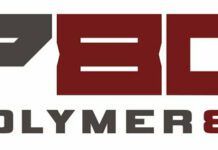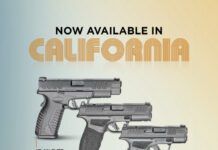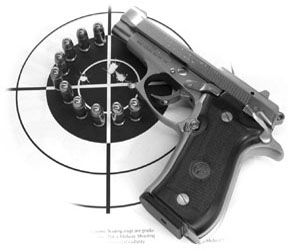
Smaller guns have always had a certain appeal. In some cases it was just the aspect of miniaturization that captures our imagination. In other cases it was the reassurance of a highly concealable weapon. One niche of such guns were semi-auto .380s, which have long been popular sidearms because of their flat, short footprint and sufficient, if not outstanding, power.
We recently tested a few full-capacity semi-automatic pistols chambered for the .380 Auto, also referred to as 9mm Kurz (“short” in English), or 9mm Browning Short in Europe. While the .380 Auto was a much better choice for self-defense than other little-gun cartridges, it still lags noticeably behind the more popular 9mm Luger in power. While the 9mm Luger case was only 0.074 inch longer (maximum overall length), the difference in power was substantial. The full-strength 9mm’s SAAMI Maximum Average Pressure rating was almost twice as much as the .380, (33,000 C.U.P. versus 17,000 C.U.P.). Still, the .380 Auto continues to enjoy a steady following. In this test we have four pistols, including the Beretta Cheetah 84LS. This gun was not to be confused with the Model 86 that features a tip-up barrel much like the pocket model Bobcat/Tomcat series. Due to a similarity in appearance and handling, the 84LS could be called a sub-compact version of the M9 or 92 series pistols. Next up, the Walther PPK/S design was a timeless original. Our test gun was manufactured under license by Smith & Wesson, and it bears the inscription of PPK/S-1 to show its family lines. The Bersa Thunder could be referred to as a Walther clone, but there were substantial differences, which we detail below. We also acquired a North American Arms Guardian, which was actually a pocket gun.
In evaluating these guns, our first concern was reliability: Would miniaturization present mechanical problems? In terms of power and accuracy, how do these guns stack up against the latest crop of subcompacts in 9mm Luger? Would any of our pistols be too small to operate comfortably? We wanted to find out.

Beretta Cheetah M84LS .380 Auto, $652
Even in the small world of 9mm Shorts there was a pecking order in terms of size. Among our four test pistols, the Beretta 84LS was the largest. This would account for the most sight radius, barrel length, the most generous grip area, and the highest capacity, (10+1). This model line starts with an MSRP of $576 for a blue finish with plastic grips, but ours cost $652 with wood grips and nickel finish. We bought ours at Fountain Firearms in Houston, (281) 561-8447, www.fountainfirearms.com.
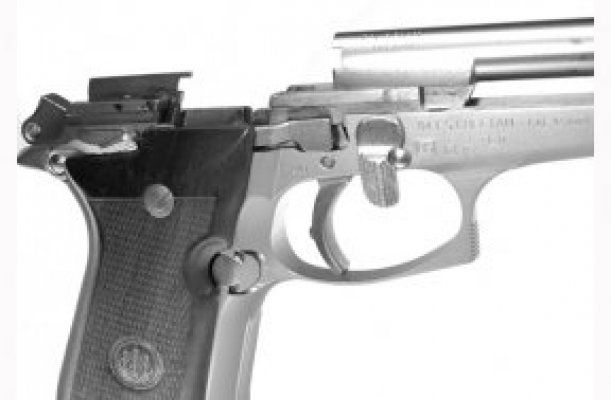
The finish had a burnished hue that matched the beautifully checkered grips. The classic “PB” (Pietro Beretta) insignia was inlayed on the left grip panel. Appearance and handling may appear to be identical to the 92 and 96 series Beretta pistols, but the Cheetah operated by a blowback system rather than locked breech. But what was most important was that there were no malfunctions of any kind.
The frame was an alloy that made a plastic-like click when we tapped it with a fingernail, but the top end was steel. While the 84LS weighed the most of our quartet of pistols at 25 ounces, this was only 3 ounces more than the considerably smaller North American Arms Guardian. The Cheetah 84LS was completely devoid of any sharp edges, and even with a top end busy with a variety of levers, we found holstering and presentation to be snag free. The safety and decocking levers were blended into the profile and did not interfere with racking the slide. Rear cocking serrations were plentiful. The two supplied magazines matched the frame and offered two windows for checking loading status at 5 and 10 rounds. The base pad was heavy polymer and did not add to the front strap. Breakdown of the magazine to mag-body, spring, and follower was a simple procedure of depressing the base pad retainer and sliding off the pad. This revealed a stout spring and polymer follower encased in a hard steel body. We felt the price of this pistol reflected quality construction that carries over to accessories such as the magazines.
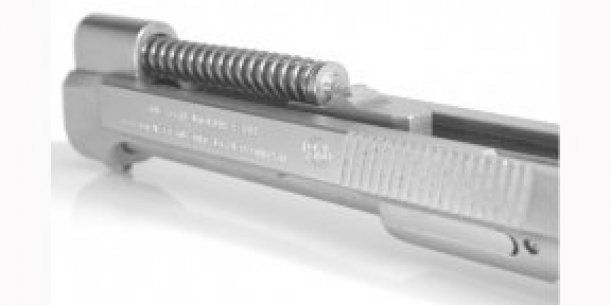
The trigger mechanism was traditional double action, with the first shot double action followed by single action fire. The Cheetah 84LS will not fire unless the magazine was in place, but we did have a great deal of trouble locking the slide back unless an empty magazine was in place. We attributed this to the way the slide release was blended into the grip profile. This lever was easily accessed for downward motion to release the slide, but difficult to get underneath and push upward to set the lock. After chambering a round, the gun can be fired single action, or the hammer can decocked by pushing the safety upward. This lever was ambidextrous. Leaving the safety/decocker lever in the upward position also disconnects the trigger. Lowering it to the firing position made the trigger ready for a double action first shot. It was possible to raise the safety to a position half way up leaving the hammer back. But, this did not create a single-action cocked and locked state of readiness. Depressing the trigger will not fire the gun but will instead activate the decocker, drop the hammer and disconnect the trigger. At the range we found the transition from double to single action to be smooth, which in some measure was a product of the comfortable hand position which did not tempt the shooter to readjust one’s grip between shots.
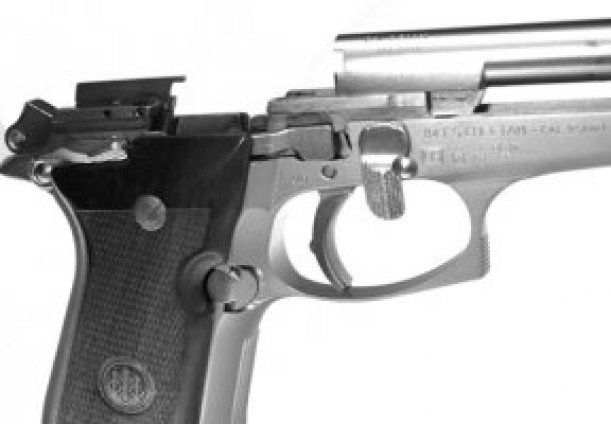
In terms of 15-yard accuracy, the Cheetah M84LS shot the only 1.0-inch group of the session, and it had an average just under 1.9 inches for all groups fired. We credit this to an above-average trigger and sights that offer a clear view of the light bars created by the front and rear sights but also a dot on the front sight that mates visually with a defined area in the rear notch. The Beretta also produced the most velocity from each test round and average muzzle energy measured 195 foot-pounds firing the Federal American Eagle 95-grain FMC round. This was 11 foot-pounds higher than its next competitor, the Walther PPK/S-1.
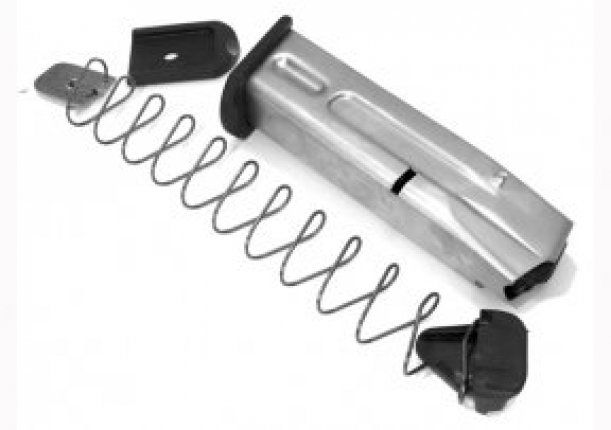
With its double-column design assuring maximum capacity and wide grip frame offering maximum control, the Cheetah 84LS was not the most concealable weapon, But it did offer the kind of ergonomics that smaller-handed shooters will appreciate. It had all the accuracy, reliability, and capacity of the full-sized Beretta 92, but in a more manageable package.
Though .380 ammunition was in some cases more expensive than its 9mm big brother, we found Hornady’s 90-grain XTP hollowpoint to be economical (20 rounds for $11.95 retail). The Cheetah handled our choice of hollowpoint ammunition with ease and comfort. With many good frangible rounds also available in .380 Auto, we feel the viability of this pistol for self-defense deserves consideration.
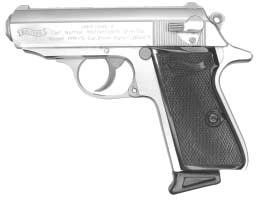
Walther PPK/S-1 .380 Auto, $540
While the Bersa Thunder was slightly larger in overall dimension, we’ll cover the “new” Walther PPK/S-1 next by virtue of its heavier weight and longer history. Smith & Wesson is now making this pistol under license from Walther. We suspect the S-1 designation means Smith & Wesson’s first model. But this is not the first time Smith & Wesson had worked with Walther, as seen in the SW99 pistol.
The PPK/S-1 test gun, which we also bought at Fountain Firearms in Houston, was easily distinguished from the genuine Walther by clear, workmanlike graphics that read Smith & Wesson, Houlton, ME USA underneath the Walther logo on the right-hand side of the slide. On the left side the words Under License of was added above the traditional Carl Walther marking. We thought the frame of the S-1 felt flatter and sharper and the machining appeared to be more austere than the German models, but to be sure of origin the serial number of the pistol appears plainly just behind the trigger guard, complete with PPK/S-1 designation.
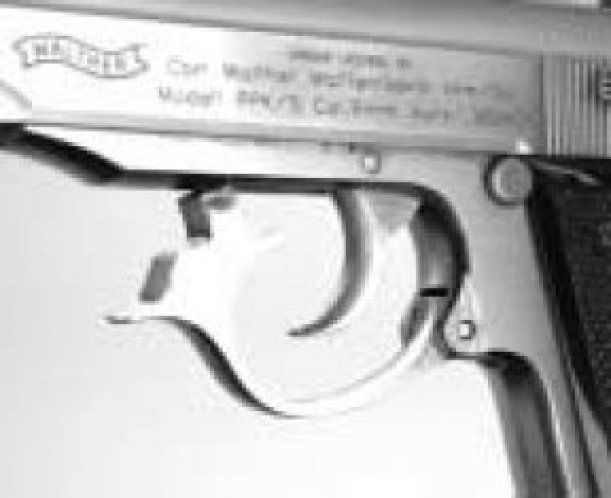
Although the PPK/S-1 was flatter and more compact than the Beretta, its all-steel fabrication made both guns weigh the same empty. Of course the Walther feeds from a single-column magazine, meaning that its maximum capacity was 7+1 rounds. This resulted in a lower weight than the Beretta when fully loaded. Anyway, the Walther was not famous for its low weight, but instead for its thin profile. One complaint we heard was the lack of an external slide lock, but the addition of this feature would certainly disturb its snag-free design.
Releasing the top end and breaking down the PPK/S-1 was achieved by rotating the hinged trigger guard, thereby integrating a static part of the frame with this function. The only external lever on the pistol was the safety/decocking device attached to the slide. After chambering a round, the hammer can be safely lowered by rotating the decocker from 9 o’clock to 6 o’clock. Leaving the lever pointed at 6 o’clock disconnects the trigger. Return the lever to the 9 o’clock position and the gun was ready to fire its first shot double action. Pulling back the hammer will return the gun to single action fire if so desired. An additional safety feature was the loaded chamber indicator that protruded from the rear of the slide just above the hammer. The red dot that shows when the safety was in the off/ready to fire position was sloppily applied, we thought. This was a small detail, but one the German factory would frown on.
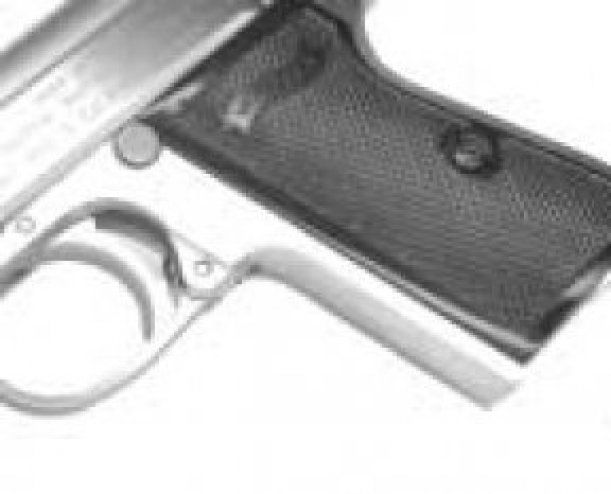
Our PPK/S-1 arrived in a plastic box large enough for a six-inch revolver with extra magazine. One supplied mag offered a basepad with pinkie extension that adds a half-inch to the front strap and a plain basepad model that was more concealable. Both hold seven rounds with loading windows marked one through seven.
Though our Walther delivered slightly less velocity and power than the Beretta in two out of three cases, accuracy was only fractionally different if not identical; (1.9 inches for all groups fired). We felt the saving grace was the single-action trigger, which felt weighty, firm, and composed. The double-action, on the other hand, was heavy and prone to breaking suddenly. If we chose to keep the PPK/S-1, this would be something we would have a qualified gunsmith address.
Seen individually, the front and rear sights do not appear to be adequate for careful fire, but our results prove that they were in scale and effective. One contributing factor may be the flat rib that tops the slide, which was scribed with wavy lines to kill glare.

0)]
Our only real complaint about the Walther pistol was the lack of comfort. The grip frame seemed to transmit more shock than we expected. Part of the reason must be the square profile that was not compensated for by the grip. We’d like to see the grip panels meet the rear edge of the frame and have the edges feathered out at the beavertail. Those who favor a high grip may well suffer contact with the slide atop the web of the strong hand. Early on we did suffer some failures to feed with the Federal ammunition, but proper lubrication seemed to be all that was needed. Of the four test guns the Walther had the greatest tendency to spit debris back at the shooter when firing from a sandbag rest. Part of the reason was deflection off of the sandbags, but blowback design pistols do tend to spray unburned powder. This was mainly because the only thing holding the gun closed was a spring, which can be partially overcome before complete ignition. When we shot standing unsupported, this problem was not noticeable, however. The Walther was a classic design that worked accurately and reliably, but through the years its manufacturers have addressed few of its shortcomings.

1)]
Bersa Thunder .380 Auto, $248
Bersa pistols were generally low cost, and the Thunder, which was made in Argentina, was a good example. It comes in a cardboard box with only one magazine that did include a pinkie extension that lengthens the front strap from 1.8 to 2.2 inches. We bought ours from SOG, (800) 944-4867.
The Thunder was in many ways a clone of the Walther PPK/S pistol. One small difference was the magazine, which includes viewing holes but without numbering. Another was the addition of two levers, one on the right side of the frame and the other on the left. On the right side was a breakdown lever that works much like the ones found on SIGArms pistols. Lock back the slide, rotate the lever, and slide off the top end. This was a simpler design for the user and cheaper for the manufacturer when compared to Walther’s “magic” trigger guard release. On the left side was a slide release just above the magazine button. This made it easier to lock back than the Walther design. Of the four pistols the Thunder weighs just an ounce more than the little N.A. Guardian. Though this was not significantly lighter than the PPK/S-1, the Bersa felt substantially lighter in the hand than the other three test guns.

2)]
Subjectively, the weight was being reduced by the use of an alloy frame, but Bersa had added some modifications that help trick perception by the human hand. For one, the frame had been rounded off with a palm swell on the back strap and tailored with smooth flowing edges. Vertical grip serrations front and rear were cut into the frame without being abrasive. Also, the plastic grips were not merely covers for the open spaces in the frame as on the Walther. Instead, the panels describe a wider, more rounded arc and fully meet the edges of the frame. The upper section of the grips offered a gentle swooping indentation similar to target grips. The outer section of the trigger guard was serrated and contoured for placement of the weak hand index finger if one so desired. While we generally try to avoid this hold on small guns, some shooters do prefer it. Overall, this gun was very pleasant to hold, and the sights were easy to see.
The frame was matte gray; the top end, including hammer, was black. A flat rib with checkering was machined into the top of the slide. The rear sight was held in a deep dovetail and screw adjustable for windage. Compared to the Walther sights, these units were big and bold with white dots plainly visible against the black color or the slide. In terms of accuracy, the Thunder was just a tick behind the Walther and Beretta pistols. Velocity and muzzle energy were also very close. Would we trade some accuracy from the Walther for the comfort of the Bersa? Seeing how these guns were not benchrest target pistols, we would answer yes.

3)]
But our reservations about the Bersa Thunder were not in performance but in operation. The Thunder was a TDA pistol with decocker/safety. In our accuracy tests we fired single action exclusively. But in our subsequent test judging the double to single-action transition, we found a problem regarding the clarity of operating the safety. That the gun will not fire without the magazine in place was fine with us.
The confusion started after a round had been chambered and the hammer was back (condition one). The slide-mounted decocker faces forward at a 9 o’clock position.

4)]
Pull the trigger and the gun will fire single action. Again, starting in condition one, chambered round hammer back, rotating the decocker to a stop at 8 o’clock and pressing the trigger, the gun fired. Return to condition one. This time we applied an extraordinary amount of pressure, requiring the use of the weak hand, to rotate the decocker to 7 o’clock. Finally, the hammer fell and the hammer was decocked with trigger disconnected. We pushed the decocker back to 9 o’clock and pressed the trigger. The round suffered only a weak strike. We changed nothing and pressed the trigger again. The round fired double action. This last drill was repeated several times. The strength of the first strike varied, but it seemed that for sure deactivation of the decocker, the trigger needed to be pressed. We feel sure that engaging the trigger should not be part of the safety regimen. We found the decocker too difficult to operate with the strong hand thumb. Also, a false intermediate position can create the illusion of cocked and locked when in reality the gun was ready to fire SA.
As luck would have it on the night before filing this story, we ran across a fellow who owned a Thunder .380 at our weekly Rangemasters USPSA club match. He said he had been carrying it for years without a problem. The decocker worked perfectly, and the standard TDA manual of arms was reliable. We couldn’t argue with him but we feel that this backs our theory that less expensive guns suffer more variation in quality.

5)]
North American Arms Guardian .380 Auto, $359
The Guardian was a gun of many surprises. For one, its lower end was marked Kahr Arms. That’s okay with us, even if there was no mention of Kahr anywhere on the box or in its paperwork. We’ve found Kahr products to be strong and reliable.
This Lilliputian pistol holds just one fewer round than the Walther and Bersa pistols (6+1). Two numbered steel mags were included. Each one breaks down as described in the Beretta section above, and one magazine comes with a pinkie extension basepad. A small zippered case was provided.

6)]
The gun was really heavy for its size, and we were reminded that a plastic pistol such as the Kel-Tec P11 weighs at least 6 ounces less and fires 10+1 rounds of full-sized 9mm. But, unlike the Kel-Tec we tested in the March 2001 issue, the Guardian proved more structurally sound.
The Guardian was a sleek little pistol with no protruding levers and a tight-fitting plastic grip with pebble finish. The gun will not lock back on its own with or without a magazine in place. The lever on the right side that was inset was for breaking the gun down, which given its small size and stiff recoil spring was not the simplest chore. Though its small size was its greatest attribute, this also made for some clumsy handling when trying to drop the magazine. Though the thumb guide molded into the left side grip panel was welcome, it was still easier to press the magazine release effectively with the weak-hand thumb rather than perform a standard release with the strong hand. With little grip area available, we strongly suggest you make the best of it without being tempted to put the weak-hand index finger ahead of the trigger guard. With its short barrel it was likely the tip of your finger could end up in front of the muzzle.

7)]
We fired the Guardian for accuracy at the distance of 10 yards off a rest (instead of 15) and at 7 yards standing unsupported. We’re sure that this gun was never meant for use beyond the distance of a few feet. Be that as it may, we were able to reconcile the pin-like front and rear sights to produce some very good accuracy, in our opinion. Had we lined up our graphs to include the Guardian it would have been noted that the other three pistols weren’t much more accurate than the Guardian .380. But the difference between 15 and ten yards was sizable. The Beretta, if not all three other pistols, was quite capable of acceptable accuracy out to 25 yards and beyond, but we feel test-firing at 7 yards standing told us all we needed to know about the Guardian.
First, the balance and feel of this gun, which features a heavy double action only trigger, was the main concern. Fired standing unsupported using two hands, our best group was as small as 1.4 inches with the Federal American Eagle FMC round. Even strong hand-only attention to these concerns will produce accurate and effective groups. But you can get careless and scoop the trigger dangerously.

8)]
The only problem encountered with the Guardian was it wouldn’t consistently feed the last round of Hornady XTP hollowpoint. But there were three things to consider. One, while heavy for its size, we feel the Guardian was strong enough to handle any .380 round you can find. Two, there are several frangibles available today that were profiled to feed like round nosed ammunition. Finally, in the case of a short barreled gun such as this, a roundnosed full metal jacket bullet might be preferable to one that expands. In our opinion, not only were they inherently more reliable, but given a pistol and ammunition combination that by nature cannot produce a higher velocity, penetration (especially in colder states where heavier garments were worn) may be a more important factor in stopping aggression.
Gun Tests Recommends
Beretta Cheetah M84 LS .380 Auto, $652. Our Pick. This was an easier to handle and easier to hide version of Beretta’s signature pistol, the model 92. While the .380 was not a big stopper, the Cheetah was still a higher capacity option with more class and charm than heavier recoiling plastic guns.
Walther PPK/S-1 .380 Auto, $540. Buy It. It was easy to continue to complain about some its inherent faults, such as slide bite and the weight of its all-steel construction compared to the latest polymer wonder guns. But the entrance of Smith & Wesson into the Walther legacy should not bother all but the staunchest Walther enthusiasts.
Bersa Thunder .380 Auto, $248. Don’t Buy. This gun was more comfortable to shoot and less expensive than the Walther. It could have been a “Best Buy.” However, we give it a “Don’t Buy” rating based on its confusing safety mechanism.
North American Arms Guardian .380 Auto, $359. Buy It. Viewing it as a semi-auto version of the derringer, we would have to say that the Guardian succeeds quite nicely. Complete reliability with hollowpoints was in doubt, but with its short barrel, one might opt for the penetration of FMJ rounds anyway.




























